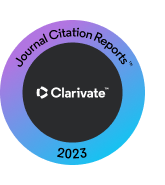QUANTIFICATION OF METAL CONCENTRATIONS IN AN ESTUARINE SYSTEM: LAGUNCULARIA RACEMOSA AS A POTENTIAL INDICATOR OF CONTAMINATION
DOI:
https://doi.org/10.5327/10.5327/Z2176-947820180352Keywords:
white mangrove; bioindicators; environment pollution; contamination by metals.Abstract
This study had as main objective to use Laguncularia racemosa as a bioindicator of the presence of metals in the mangrove of the Buranhém river’s estuary, in the city of Porto Seguro, southern Bahia, in May 2017. For this purpose, green and yellow leaves from this plant were collected at four points in the estuary. These samples underwent acid digestion (USEPA 3050‑B method) for further quantification of metals by ICP OES. The minimum and maximum values for the concentration of metals found were, respectively (mg kg‑1) Cr: 0,29 - 2,90; Mn: 7,92 ‑ 72,13; Fe: 74,07 ‑ 392,67; Ni: 0,25 ‑ 1,24; Cu: 0,18 ‑ 1,19; Zn: 6,62 ‑ 16,93; Sr: 47,09 ‑ 167,28; Cd: 0,06 ‑ 36,42; Ba: 3,20 ‑ 17,24; and Pb: 2,59 ‑ 145,90. The results indicate that Laguncularia racemosa is a bioindicator of metals with a relevant potential regarding the quality of mangrove ecosystems.Downloads
Download data is not yet available.
Downloads
Published
2018-12-03
How to Cite
dos Santos, T. A., Bonfim, T. M., Silva, F. S., Silva, A. G., Bandeira, M. L. S. de F., de Jesus, R. M., & Nascimento, L. D. (2018). QUANTIFICATION OF METAL CONCENTRATIONS IN AN ESTUARINE SYSTEM: LAGUNCULARIA RACEMOSA AS A POTENTIAL INDICATOR OF CONTAMINATION. Revista Brasileira De Ciências Ambientais, (49), 51–65. https://doi.org/10.5327/10.5327/Z2176-947820180352
Issue
Section
Articles
License
Copyright (c) 2018 Revista Brasileira de Ciências Ambientais

This work is licensed under a Creative Commons Attribution 4.0 International License.




























